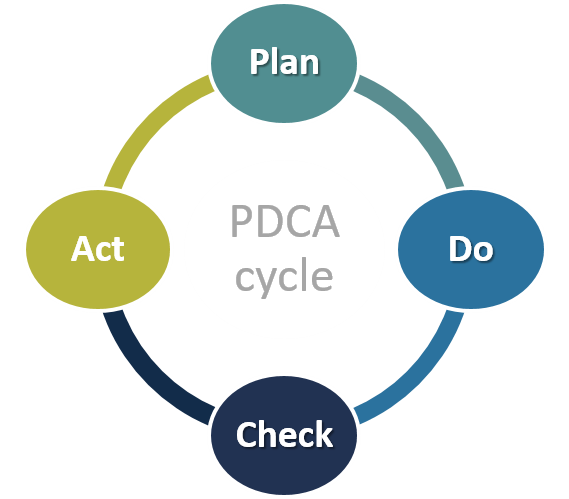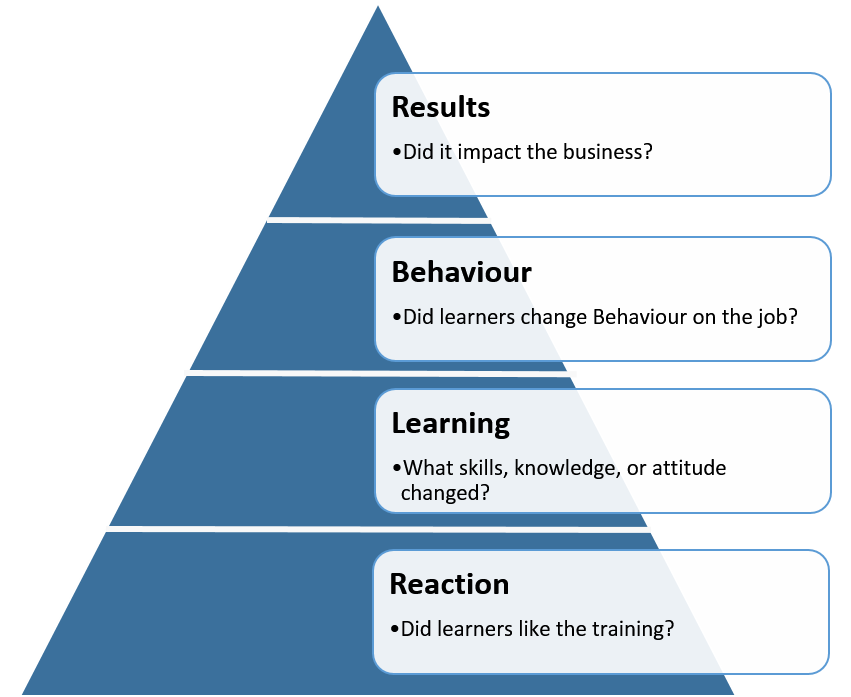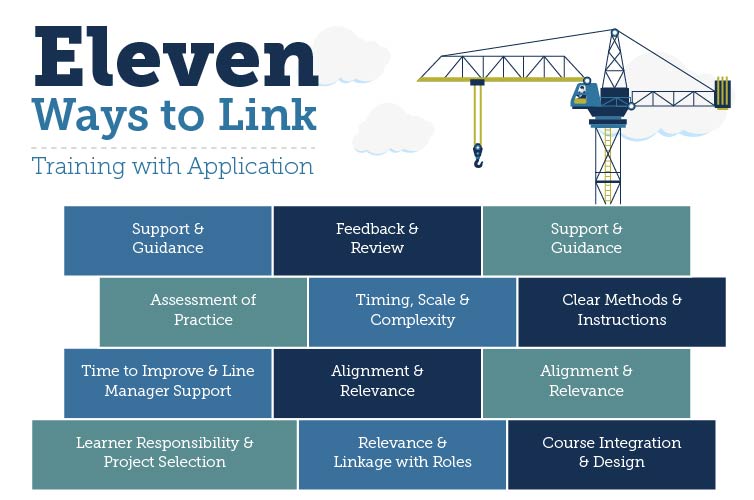
Share this Image On Your Site
<p><strong>Please include attribution to https://www.leancompetency.org/ with this graphic.</strong><br /><br /><a href=’https://www.leancompetency.org/lcs-articles/11-ways-link-training-application/’><img src=’https://www.leancompetency.org/wp-content/uploads/2016/09/754px_11_Ways_Banner.jpg’ alt=’Eleven Ways to Link Training with Application’ width=’100%’ border=’0′ /></a></p>
Learning by Doing
“For the things we have to learn before we can do them, we learn by doing them.”
― Aristotle, The Nicomachean Ethics
Linking lean training to the application of knowledge in the workplace is critical if it is to be considered effective in generating an acceptable return on investment, engendering real business benefits and playing a positive role in the development of a continuous improvement culture.
It is particularly important for those new to lean methods and continuous improvement in general, though should be a feature of lean oriented education at any level.
 Most lean practitioners realise that while training should provide a strong technical foundation and structure for competence development, more extensive learning and mastery of lean tools and techniques can only take place through ongoing application, utilising scientific thinking and the classic PDCA approach. Hence learning by doing, or experiential learning, is seen as central to lean competency development.
Most lean practitioners realise that while training should provide a strong technical foundation and structure for competence development, more extensive learning and mastery of lean tools and techniques can only take place through ongoing application, utilising scientific thinking and the classic PDCA approach. Hence learning by doing, or experiential learning, is seen as central to lean competency development.
This is a key reason why the LCS defines lean ‘competency’ as having both knowing and practice elements.
Training Effectiveness
This links with the broader topic of measuring training effectiveness and there have been numerous studies into this area that should be referenced when considering how to assess training’s impact.
Several models and approaches have emerged, the most famous of which is probably the Kirkpatrick Model followed by Kaufman’s Five Levels of Evaluation. [see Kirkpatrick Model infographic].
Training Challenge
On a practical level, some CI managers report challenges in getting those trained to apply their new knowledge in the workplace, for example by undertaking post-course implementation projects and, not surprisingly, fear that the impact and effectiveness of the training will not be fully realised if this does not take place.
A general assumption, of course, is that learners will be applying their new knowledge in a working environment that is supportive of continuous improvement; if it is not, then clearly there is a risk that improvement activity never gets very far off the ground in the first place.
The Eleven Factors
Below is a list of factors that can play a positive role in ensuring that implementation activity follows a training course or programme. These have been gathered from observation and feedback and it is by no means a definitive list, so it is likely that additions or refinements can made.
Which are pertinent to an organisation will depend on a number of considerations, such as the organisation size, its geographical footprint, the level of formality of its overall CI approach and the particular model adopted, its level of lean maturity, how it resources its lean support function, in-house or consultancy delivered training and so on.
1. Course Integration & Design
 A fundamental factor – and probably the most obvious – is to ensure that theory and practice are closely integrated when designing the course, which is likely to be the case if it is a subset of the organisation’s overall business improvement strategy. Expectations that the knowledge gained should be implemented relatively quickly should also be established early on and reflected in the course objectives, learning outcomes and delivery approach.
A fundamental factor – and probably the most obvious – is to ensure that theory and practice are closely integrated when designing the course, which is likely to be the case if it is a subset of the organisation’s overall business improvement strategy. Expectations that the knowledge gained should be implemented relatively quickly should also be established early on and reflected in the course objectives, learning outcomes and delivery approach.
There should be mechanisms in place to promote this, for example
- Having a training programme spread over a period of time, with ‘homework’ between each training session involving a practical task which is subsequently reviewed in course sessions.
- Having specific discussions about implementation methods and ideas during the course.
- Requesting that learners arrive at the course pre-armed with ideas for implementation projects, preferably gathered from their colleagues or managers.
- Discussing the post-course implementation aspect with relevant stakeholders before the course takes place to gain buy-in and elicit improvement ideas.
2. Relevance & Linkage with Roles
 Training must appear relevant to learners and closely linked to their ‘day jobs’ and work priorities, with obvious opportunities apparent for implementation. Course material should include pertinent case studies and examples based on similar industries or from previous organisational improvements that learners can relate to. Having some training sessions actually on the ‘shop floor’ can be valuable, though this may not always be easy to organise.
Training must appear relevant to learners and closely linked to their ‘day jobs’ and work priorities, with obvious opportunities apparent for implementation. Course material should include pertinent case studies and examples based on similar industries or from previous organisational improvements that learners can relate to. Having some training sessions actually on the ‘shop floor’ can be valuable, though this may not always be easy to organise.
Training can be made more relevant and better received when delivered by a teacher or facilitator with authoritative practical experience, as well as subject matter expertise.
Linkage with roles can also be enhanced if CI is part of job descriptions and relevance can be magnified if expected outputs are well aligned to business goals (see below). Similarly, if CI is included in the organisation’s appraisal or personal development review processes, then it will be higher up personal agendas.
3. Learner Responsibility & Project Selection
 The course selection or admissions process can impact the success to which knowledge is applied in the workplace, as in a recent research study by Ashridge Business School it was found that learner individual characteristics was the strongest predictor of the transfer of knowledge in the workplace (compared to programme design and work environment). Therefore, it is critical that participants possess the appropriate knowledge, skills and attitudes to learn and transfer what is being taught – and this aspect can be emphasised in the course itself.
The course selection or admissions process can impact the success to which knowledge is applied in the workplace, as in a recent research study by Ashridge Business School it was found that learner individual characteristics was the strongest predictor of the transfer of knowledge in the workplace (compared to programme design and work environment). Therefore, it is critical that participants possess the appropriate knowledge, skills and attitudes to learn and transfer what is being taught – and this aspect can be emphasised in the course itself.
The research also concluded that participants need to ensure they are clear about the benefits of the programme and should identify ways to apply learning to their roles, taking personal responsibility for applying that learning back in the workplace, as well as seeking feedback regarding new skills.
As suggested in 1) above, care needs to be taken in identifying the project or activity that the learner will eventually undertake in the workplace, given the importance of personal responsibility in its success. Selection criteria can be established and a degree of rigour exercised in identifying projects so that the learner is committed and feels real ownership.
4. Support & Guidance
 Providing guidance, coaching and support to learners when undertaking post course implementation activities is vital, especially for novices. Ideally, experienced practitioners should be available locally to assist in this task, which could be in the form of the local CI team, a lean support office, external consultants or simply experienced colleagues.
Providing guidance, coaching and support to learners when undertaking post course implementation activities is vital, especially for novices. Ideally, experienced practitioners should be available locally to assist in this task, which could be in the form of the local CI team, a lean support office, external consultants or simply experienced colleagues.
There may be a particular challenge where practitioners are geographically dispersed and isolated, in which case more creative solutions may be required. Digital communication technologies have a role to play here, such as web based services, for example, Skype for Business, WebEx, Google Circles etc., as well as social media, blogs and discussion forums on intranets or public platforms. Web based library resources can also be a valuable asset. Also, undertaking improvement activity as a local group or part of a team can help mitigate the problems of geographical isolation.
Support and guidance also includes capturing data on learners progress, as there will need to be monitoring and probably some chasing, as invariably a marshalling role is required. Finally, whatever support is offered, it should be easy to access and responsive when called upon.
5. Feedback & Review
![]() Linked to Support and Guidance, there should be opportunities for periodic review of work undertaken to deal with any issues that arise. This could take place within the context of a training programme using a teach-apply-review approach, or part of a scheduled reporting or feedback routine.
Linked to Support and Guidance, there should be opportunities for periodic review of work undertaken to deal with any issues that arise. This could take place within the context of a training programme using a teach-apply-review approach, or part of a scheduled reporting or feedback routine.
These can take place through a combination of physical and web based meetings, if the IT infrastructure allows, while the web versions are invaluable for those in remote locations. These activities ensure regular communication takes place, create continuity, help maintain momentum, as well as keep up interest.
Peer review is particularly effective in generative constructive criticism and also can create a sense of problem/solution ownership by the group.
6. Clear Methods & Instructions
 Learners should be clear on what methods and techniques they will be using for their implementation activities and how they report and communicate the results of their activities. The training should have described precisely the organisation’s improvement model and approach (if present), the standard analysis and improvement tools to be employed, the problems solving methods used, the communication processes and so on.
Learners should be clear on what methods and techniques they will be using for their implementation activities and how they report and communicate the results of their activities. The training should have described precisely the organisation’s improvement model and approach (if present), the standard analysis and improvement tools to be employed, the problems solving methods used, the communication processes and so on.
The organisation should also have its own standard analysis and reporting mechanisms, such as A3 templates, project charters, report formats and templates, easily assessed and available physically or digitally in a resources library.
7. Assessment of Practice
 Ensuring that the training’s assessment strategy includes a practical element clearly signals its importance to learners and knowing that a failure to complete this part will result in not passing the assessment should act as a positive motivator to finish the task.
Ensuring that the training’s assessment strategy includes a practical element clearly signals its importance to learners and knowing that a failure to complete this part will result in not passing the assessment should act as a positive motivator to finish the task.
Learners should be clear on the criteria to be used to assess projects and different elements can be weighed according the importance attributed to each.
Where there is also a knowledge test as part to the assessment, the two parts can be weighted differently – for example, 60% in favour of a project and 40% in favour of a test. Again, this emphasises the relative importance of implementation.
8. Timing, Scale & Complexity
 Have a reasonably short a time gap between the end of the training programme and the expected delivery of an improvement project report will help it remain alive and salient. This suggests that projects should be appropriately scaled and do-able within the short time period, so should not be overly complex or involving a high number of stakeholders, departments or complex value streams.
Have a reasonably short a time gap between the end of the training programme and the expected delivery of an improvement project report will help it remain alive and salient. This suggests that projects should be appropriately scaled and do-able within the short time period, so should not be overly complex or involving a high number of stakeholders, departments or complex value streams.
The length of this time gap will depend on the experience of those being trained, with a shorter period of around one month for newcomers and up to six months for others.
For those new to improvement practice, initial implementation experiences are as much about building confidence and learning about how to use tools and techniques as they are about delivering business benefits, so a more relaxed view can be taken on aspects such as strategic impact and hard quantified returns.
9. Time to Improve & Line Manager Support
 If continuous improvement activity is not an explicit part of role or job descriptions (and it not often is), those responsible for managing the training need to ensure that the learners line management support the post course activities and sanction the appropriate time to undertake the work. Having the project linked to local priorities should help in this, as will pre-course stakeholder consultation.
If continuous improvement activity is not an explicit part of role or job descriptions (and it not often is), those responsible for managing the training need to ensure that the learners line management support the post course activities and sanction the appropriate time to undertake the work. Having the project linked to local priorities should help in this, as will pre-course stakeholder consultation.
Of course, allowing employees time to be creative or innovative is not a new idea – for example, 3M’s famous “15 percent time,” programme, that allowed employees to use a portion of their paid time to pursue their own ideas, which is fêted to have led to the development of some the company’s great products.
Having the support of line management will depend significantly on the overall state of CI in the organisation as a whole. Line managers in organisations with established CI cultures and habits are clearly more likely to offer support compared to those where lean’s acceptance and practice is more varied in its different units or divisions, where middle management may not fully understand or champion lean principles.
10. Alignment & Relevance
Implementation activity and improvement  projects need to be seen as pertinent, timely and fitting, relating to business unit or departmental purpose/goals and local KPI’s. This increases the chance that stakeholders take them seriously, as they can have an impact on key metrics and personal performance.
projects need to be seen as pertinent, timely and fitting, relating to business unit or departmental purpose/goals and local KPI’s. This increases the chance that stakeholders take them seriously, as they can have an impact on key metrics and personal performance.
Post course improvement projects should clearly state up front the benefits they aim to bring to the organisation, usually under the Quality-Cost-Delivery banner. While hard financial outputs are often demanded from an improvement project in the form of costs saved, a more balanced scorecard approach is preferable – perhaps focusing on releasing capacity, new sales, customer value, environment, health and safety, morale and other soft factors that have a more indirect positive contribution.
This non-cost reduction focus may be necessary for novices and will also help in reinforcing the message that real lean is not about cutting costs.
11. Reward & Recognition
 Reward and recognition has a role to play in incentivising learners to apply their knowledge and one of the LCS’s underlying premises is that the external acknowledgement of achievement can play a powerful role in motivating employees to engage in continuous improvement.
Reward and recognition has a role to play in incentivising learners to apply their knowledge and one of the LCS’s underlying premises is that the external acknowledgement of achievement can play a powerful role in motivating employees to engage in continuous improvement.
Motivating learners is critical and recognising that you need to appeal to self-interest and address the “what’s in it for me?” question that is sub-consciously asked by many. Recognition for achievement will address the esteem needs of the Maslow motivation model – the need for appreciation and respect.
Formal recognition for successfully completing projects (and other aspects of the assessment) can be achieved by certification and qualification awards, which can be trumpeted and heralded through award presentation ceremonies, internal PR stories showcasing success and prizes for best project or best team, etc. Celebrating success also helps build teams and the right corps d’esprit.
Article Download
Download a PDF version of the article
Eleven Factors Linking Training with Application




